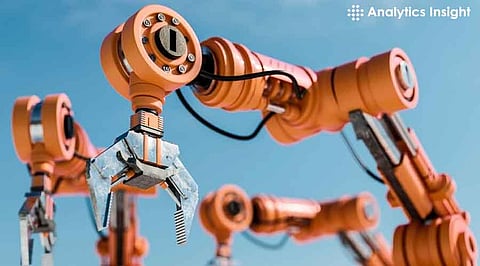

Technology is increasing rapidly, and among the most crucial innovations in automation is machine vision. Machine vision enables machines to see and perceive their environment and to perform their work with high speed and accuracy. In 2025, several new machine vision technologies will be applied for the development of automation in various industries. Let's consider some of the top technologies.
AI and deep learning are making machine vision systems smarter than ever. In earlier times, machine vision systems could only follow certain rules to distinguish images. Through deep learning, machine vision can now learn with experience and progress over time; thus, being able to perceive patterns, objects, and defects more accurately. For instance, AI can assist a machine in detecting tiny flaws in products or identifying complex objects in various environments, making it very useful for quality control in manufacturing.
Traditional machine vision systems use 2D images, but 3D machine vision takes it a step further by adding depth. This means machines can understand not only the width and height of an object but also its depth. By employing a system of multiple cameras or sensors, 3D vision enables machines to take images with depth and, thus can be used for applications that include the assembly of products, aligning parts, or picking objects from a bin. It allows for more flexible and efficient use of automation in more complex environments.
Machine vision does not rely only on visible light; it can also take images with other spectrums of light, such as infrared or ultraviolet. Multispectral and hyperspectral imaging technologies can see things that the human eye cannot. For example, they can detect contaminants in food or monitor the health of crops in agriculture. The ability to see beyond the visible spectrum makes these imaging systems very useful in applications that demand a high degree of detail, such as food safety or environmental monitoring.
One of the challenges of machine vision systems is processing the huge amount of data they gather. Edge computing solves this by allowing data to be processed on the device itself, rather than sending it to a remote server. This reduces delays and allows for faster decision-making. For example, robots in factories can instantly analyze the images they capture, making real-time adjustments to their tasks. With faster internet connections, such as 5G, edge computing will continue to improve the speed and efficiency of machine vision systems.
This is a significant aspect of autonomous robots. These robots use machine vision to help them look at their environment and perform particular tasks without being guided by humans. For example, in the industries, robots with machine vision are capable of assembling products, checking for defects, or sorting items on the conveyor belt in manufacturing industries, thus making production faster and more accurate. These robots can safely operate within shared human-inhabited environments, thus eliminating chances of accidents and increasing productivity.
These are compact integrated systems that involve a camera, processor, and sensor in a single system, hence easy installation and use within different industries. For instance, the smart camera may be set to inspect the quality of the products manufactured, monitor the traffic, and check on the state of equipment concerning possible maintenance. They are also cheaper and more compact compared to their traditional counterparts and can be used by the business to integrate machine vision into the operations without spending too much on equipment.
Machine vision is dramatically changing the whole concept of work in automation. New technologies related to AI, 3D vision, edge computing, and hyperspectral imaging are making the machines smarter as well as making them work very efficiently. That helps the various industries to function more productively, make fewer mistakes, and create safer places to work. The days ahead are likely to be crucial for machine vision, and by the looks of it, such a future scenario will definitely put it in play.
